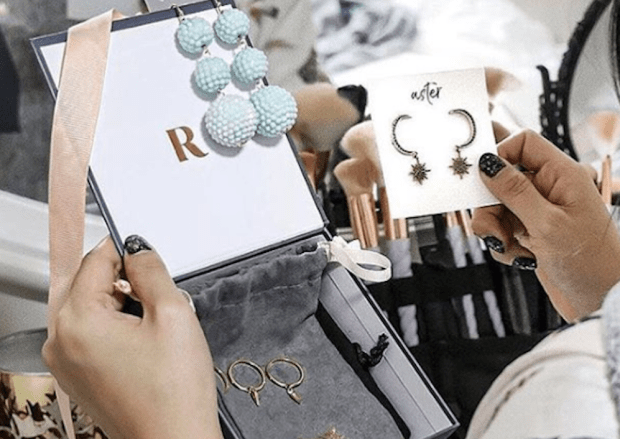Taking The Intimidation Out Of Jewelry With Smart Subscription Services

Jewelry shopping doesn’t seem like a friction-filled retail category, but any consumer who has spent time trying to purchase the right piece can affirm it’s not exactly a consumer-optimized process. There are thousands of designers, and very slight variations are the difference for consumers between something that goes into regular rotation and something that just sits in a jewelry box for most of its existence.
In short, according to Rocksbox Co-Founder and CEO Meaghan Rose in this week’s Shop Talk, the process was “very fragmented” and “very intimidating” and was creating a somewhat broken consumer experience. The customer makes a split-second decision whether or not they want to spend $100, hoping that the purchase works out through future wears.
“So, I started thinking about if I were to create a shopping experience — just to re-imagine it — for jewelry. What would that look like? I came up with this idea of instead of having all of this product just sitting around in the warehouse or on a shelf somewhere, why don’t you just send it to the customer and let her wear it and then she can decide if she wants to buy it or not?”
That concept was at the heart of Rocksbox, a subscription service that gives customers a window to test-drive their accessories, when it was founded in 2011.
The service works by shipping out a box with three jewelry pieces per month. The Rocksbox subscriber then gets a few weeks to try out the merchandise and see if they like it enough to keep it around. If they do, they keep it, and the item is charged to their account. If they don’t, they return it. The customer is only charged for what they keep — plus a $21 per month subscription charge.
Customers, according to Rose, aren’t just using Rocksbox as a jewelry rental service. About 40 percent of customers make a purchase at the end of the trial period.
“The whole concept is fashion as a service,” the CEO said. “You can have new stuff and drop it off like you are dropping off dry cleaning.”
The idea, Rose noted, was inspired by her past work as a McKinsey consultant with Sephora and the ways in which they’d disrupted makeup as a category for shoppers who weren’t happy with the experience but who were resigned to its mediocrity. Sephora changed shopping for makeup with a simple innovation: providing lots of options and giving the consumer the option to “play with” the product.
The idea of giving customers a chance to have a hands-on experience with a product before fully committing to it — combined with the power of technology to change how that experience is delivered to consumers — was compelling enough for Rose to leave her consulting career to found Rocksbox in her apartment.
A little over five years later, the firm has grown significantly, raised $11.5 million, moved its fulfillment center to Ohio and has attracted some fairly flashy name-brand partnerships, including a capsule line designed by Nicole Richie last year.
Rocksbox takes the uncertainty and intimidation factor out of the buying process, with the goal of making the process itself more intelligent by offering its customers choices. Jewelry, Rose noted, is well-suited to eCommerce. It’s small and light, so shipping overhead isn’t a major issue. There are sizing concerns, of course, but not on par with apparel items. And re-wear doesn’t have the same “ick” factor for some consumers that one tends to see in other retail items, like shoes.
“We’ve invested a lot in the back-end logistics and the reverse logistics to support this business model, as well as the cleaning and sterilization and repackaging. And just doing that at scale so that we can have good margins on the fulfillment side, put that back into the customer experience, the packaging and all that,” Rose told Retail Dive.
The bigger vision, Rose noted, is building a better consumer experience with technology, using the robust data streams at the firm’s disposal. The evolution of eCommerce, she noted, has gone beyond merely giving people what they want. Instead, it’s about anticipating what they are going to want.
That change — powered by innovations like Alexa — is only going to become more prevalent, Rose predicted, as the technology itself gets more refined.
“Sometimes it’s a little harder, like jewelry, where there’s a lot of taste involved. But the pace of change in technology and data science is so rapid right now that we’re getting so fast and we’re really cutting out the points of friction along the way.”
